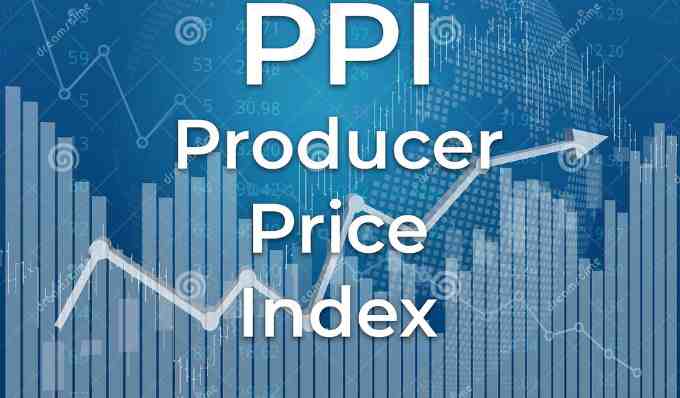Economists use the producer price index to track the rate of inflation from the producer’s point of view. The Producer Price Index chart can provide insight into the future course of monetary policy, which is critical because it allows businesses and investors to make better investment decisions. There is a formula used to calculate the producer price index to determine an outcome.
Producer Price Index
While PPI measures inflation from the standpoint of producers, CPI measures the total worth of goods and services consumers have purchased over a specified time. The increase in producer also causes an increase in consumer prices which always signify inflation. Furthermore, As producer prices substantially impact those charged to consumers and vice versa, the price patterns for producers and consumers are unlikely to differ for very long.
Distribution costs, taxes, and government subsidies may cause short-term differences in inflation between the wholesale and retail levels.
PPI is used to estimate inflation based on the costs of important inputs. It is also used to determine how to implement escalator provisions in private contracts. It is also essential for comparing wholesale and retail price trends as well as tracking price changes by industry.
What Is Producer Price Index
The Producer Price Index (PPI) is a family of indexes that measures the average change over time in selling prices received by domestic producers of goods and services. In other word, it tracks the rate of change in prices of goods sold by producers over time.
It also keeps track of pricing changes for products at the producer level. As a result, it is used to monitor an economy’s inflation rate.
It measures the average change over time in the prices domestic producers receive for their output. The index is published monthly by the U.S. Bureau of Labor Statistics (BLS). Business and investors uses the PPI to make better decisions.
Uses of Producer Price Index
- The producer price index has the ability to gather prices up to the retail level and then forewarns upcoming price changes for customers and enterprises.
- The PPI for crude commodities aids economists in predicting future commodity prices.
- The producer price index data is also used to develop financial and oversight policies.
- It enables geographical comparisons of various products across states, cities, and even entire countries.
- The PPI enables comparison of workers’ purchasing power at various wage levels.
Producer Price Index Formula
The producer index formula is used to calculate the average change in price. We make use of four formula to calculate for producer price index:
#1. Fundamental Formula
The general price index is determined using the price index formula. The price of the market basket of items from a base year and a target year is used to calculate the price index.
Price Index Formula: PPI = Current Basket Price / Base Basket Price multiplied by 100
For instance
There are two PPI examples utilizing the conventional PPI formula below:
- Example 1: (Base price is year 1)
Year 1 Cost is $250
Price in Year 2: $295 PPI: 295/250 x 100
PPI = 1.18 x 100, or 118 in this case.
2. Example 2
The price in year 1 is $5, and the Price in Year 2 is $7.
Year 3 Cost is $9.
The base year is Year 1, and Year 3 is the preferred current price according to economists.
PPI = 9/5 x 100
PPI = 180
#2. Laspeyres Formula
This PPI formula weighs goods in proportion to their quantities in the base year.
PPI (Laspeyres) = (∑q_0 × p_t)/(∑q_0 × p_0 ) x 100
Where,
q0 = quantity in the base period
p0 = price of the product in the base period
pt = price of the product in the current year
What Is the Price Index
The price index is the weighted or normalized average of prices for a particular class of products or services during a specific time period in a particular region. Finding the weighted average of relative prices for those items or services in that industry is the primary way for determining how to obtain price index. Typically, the metric consists of a “basket of goods” in a particular industry.
#3. Using the Paasche Price Index
Using the Paasche Price Index is one thorough way to calculate the price index.
The formula for the Paasche Price Index:
Price at Observation Period x Observation Quantity divided by Price at Base Period x Observation Quantity multiplied by 100 is known as Paasche PI.
Paasche Price Index Illustration
Price Variation: (year 1 being the base year)
Pricing for Product A in Year 1 is $2.
Pricing for Product A in Year 2 is $4.
Quantity:
20 units in the first year, 30 units in the second.
Paasche Price Index is equal to (4×30)/(2×30)x100.
For this commodity, the Paasche Price Index would be 200.
#4. Fisher Formula
This formula computes PPI as the geometric mean of PPI (Laspeyres Index) and PPI (Paasche Index).
PPI (Fisher) = √(Laspeyres Index X Paasche Index)
= √(((∑q_0 × p_t)/(∑q_0× p_0 ) x 100 ) X ((∑q_t × p_t)/(∑q_t × p_0 ) x 100) )
Among these formulae, BLS uses the Laspeyres Index formula to calculate PPI.
Categories of Producer Price Index
There are three categories of the Producer Price Index, which is made up of various components that sample wholesale prices from a number of industries.
#1. Industry-level:
The BLS monitors production output information at the level of each individual industry. The Producer Price Index (PPI) also contains indexes for producer prices paid in each of more than 500 industry sectors based on output sold outside the sector. The categories can be utilized with those employed in other releases to report data on production, employment, earnings, and productivity at the industry level.
#2. Commodity:
This category keeps track of combinations of items and services based on similarities; these combinations are frequently composed of goods that consumers have utilized.
Based on the current stage of processing, this classification keeps track of how things are made, from the initial stages of assembly through the point of sale.
#3. Final Demand-Intermediate Demand (FD-ID):
The classification is used according to who would be using the goods and services,. In the case where the end users are the customers themselves, PPI identifies the price adjustment as a final demand. The price adjustments, however, are referred to as intermediate demand when the goods and services are delivered to clients through intermediary channels.
Producer Price Index Chart
An index chart is an interactive line graph that, based on a chosen index point, displays percentage changes for a group of time series.
The producer price index chart enables economists to record and also track how much the products cost as they leave the producer. It is also a group of about 10,000 indexes that are used to figure out how fast an economy is growing. PPIs are accessible for a number of manufacturing and service industries’ output.
The PPI, formerly known as the Wholesale Price Index (WPI) in the US, keeps track of the costs associated with the initial commercial transaction and the prices of the goods and services involved. It also captures variations in the cost of raw materials or inputs, semi-finished goods, or final goods.
The cost of semi-finished and finished goods grows along with the price of inputs.
A portion of it is retained by the producer, and the remainder is given to the customer. The effect is a rise in product prices and price inflation.
PPI numbers are intimately related to determining the inflation rate in a country because the PPI has a direct impact on consumer pricing. As a result, regulators keep an eye on them to ensure price stability as needed.
The PPI program examines the typical change in selling prices over time that producers receive in exchange for the goods and services they produce. BSL considers over 25,000 entities that offer about 100,000 quotations each month. To create the PPI, BLS compiles this data.
Because of their considerable volatility, food and energy prices are not included in the core PPI.
What Happens When PPI Increases?
An increase in the PPI usually means that inflation is on the way. Producers eventually will try to pass their cost increases on to consumers. A change in the PPI can signal a change in the Consumer Price Index.
How PPI Is Calculated?
PPI indexes are calculated based on products and services, industries, and the buyer’s economic identity. They are also useful in calculating the overall monthly change in final demand PPI.
Does Fed Look at PPI or CPI?
The government tracks U.S. inflation and provides monthly updates through the Consumer Price Index (CPI) and Producer Price Index (PPI) reports. The first one monitors prices paid by consumers, and the second tracks wholesale prices.
What Does PPI Tell Us About Inflation?
An increase in the PPI usually means that inflation is on the way. Producers eventually will try to pass their cost increases on to consumers. A change in the PPI can signal a change in the Consumer Price Index.
How Long Is too Long on PPI?
The Producer Price Index for final demand declined 0.5 per cent in December. Prices for final-demand goods decreased 1.6 percent, and the index for last-demand services rose by 0.1 per cent. The index for final demand increased 6.2 percent in 2022.
How Does PPI Affect Gold?
Producer Price Index (PPI) reflects changes in production costs and is usually seen as a leading indicator for CPI. When consumer prices rise, it’s likely to raise inflation. Increasing inflation suppresses domestic purchasing power and devalues money.
Who Benefits from Inflation?
Borrowers gain from inflation because it enables them to repay lenders with money that is now worth less than it did when they first borrowed it. When prices go up because of inflation, there is more demand for loans, so interest rates go up, which is good for lenders.
What Is Good PPI Value?
The change in prices paid to domestic producers is tracked monthly by the producer price index (PPI). If inflation goes up, which is shown by higher PPI numbers, interest rates may go up. Consumers who purchase something will typically pay more if the price per unit is higher than if it is lower.
In Conclusion,
The Producer Price Index (PPI) measures the total shift in producer-level prices for goods and services. In fact, they use the value of PPI to know how quickly prices are rising in a given economy. The PPI numbers are released on a regular basis by the Bureau of Labor Statistics (BLS).
FAQs
What does PPI measure
PPI gauges the typical change over time in the selling prices domestic producers obtain for their output, according to BLS figures. PPI is an assortment of industrial indicators that gauges the state of the economy. The BLS gathers statistics that are needed to calculate inflation rates. The PPI is a tool that economists use to forecast inflation, economic trends, and changes in the Consumer Price Index.
What is the difference between PPI and CPI?
The PPI makes an effort to gather prices on a single day of the month (the Tuesday of the week that includes the 13th), whereas the CPI gathers prices all month long. Lastly, while prices measured by the PPI do not include sales and excise taxes, prices calculated by the CPI do.
How does PPI affect forex trading?
The PPI is used by forex traders to determine pricing trends and gauge inflation. Because customers can purchase fewer products and services with each unit of currency, inflation reduces the purchasing power of a nation’s currency.
Related Articles
- TREASURY INFLATION PROTECTED SECURITIES (TIPS): How It Works
- How to Invest in Index Funds: 7 Simple Steps (+ Free Tips)
- Earned Value Management (EVM): Detailed Explanation
- WHY INVESTMENT IS IMPORTANT: In Business & Future Life
- ARE BONDS A GOOD INVESTMENT Right Now in 2023?
- INFLATION: Meaning, Causes, Pro & Cons






